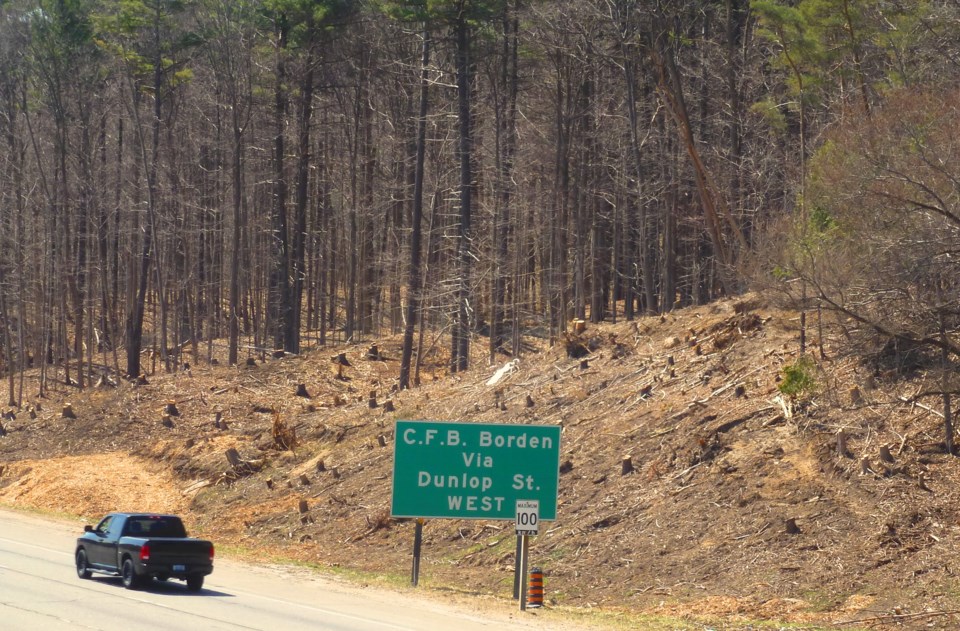Tree stumps and bare earth along Highway 400 in Barrie are a sure sign that bridge construction season is upon us.
Ontario’s Ministry of Transportation (MTO) says this vegetation clearing is advance work for the Anne Street bridge replacement project, which will start this spring.
“Trees are removed before springtime to avoid impacts to birds during the breeding season,” said Astrid Poei, MTO communications spokeswoman. “In addition, the project has a landscape plan and the ministry will be replanting trees along the west side of Highway 400.”
A preliminary cost estimate hasn’t been finalized. Following detailed design, the project will move into procurement and then construction. To ensure competitive tender bids, the ministry does not publish its project estimates. In order to obtain the best value bid for the project, the MTO only releases costs once the procurement process is complete.
Replacing the Anne Street bridge is one of four similar Barrie projects on the MTO’s radar.
Detail design is underway for the Highway 400/Essa Road interchange reconstruction project, with work planned to begin in spring 2022, subject to funding and environmental approvals, and anticipated to be completed by fall 2025.
The ministry is also undertaking the detail design and class environmental assessment study for the replacement of bridges on Highway 400 at Dunlop Street and Sunnidale Road, including the reconstruction of the Highway 400 and Dunlop Street interchange.
Poei also said the MTO has been planning for the future widening of Highway 400 through Barrie. In 2017, the ministry completed a transportation environmental study report update for Highway 400 between Highway 89 and Highway 11. This update was necessary to ensure any developments since the original 2005 report, such as Barrie’s Transportation Master Plan and the Ontario Growth Plan, were properly accounted for in the MTO’s planning.
“The ministry is also proactively preparing for future widening of Highway 400 by ensuring that new bridges and/or replacement bridge projects do not preclude future widening,” she said.
Widening the 400 to eight or 10 lanes from six is seen as a way to ease the growing gridlock commuters, commercial vehicles, tourists and cottage drivers face on a regular basis. Based on 2016 numbers, the MTO says the average annual daily traffic along Highway 400 is approximately 100,000 to 120,000 vehicles in the Barrie area, with the highest numbers between Essa Road and Dunlop Street.
In 2002, MTO officials said commuter times on Highway 400 would double in 20 years if the highway wasn’t widened. At that time, the plan was to expand the 400 to eight lanes between Highway 89 and Molson Park Drive (now Mapleview Drive), with an option to go to 10 lanes. It would be 10 lanes from Molson Park Drive (Mapleview Drive) to Bayfield Street, then back to eight from Bayfield to the Highway 400/11 interchange. The cost of this work was estimated, at the time, to be $300 million.
“The widening of Highway 400 through Barrie is not currently funded,” Poei said. “Every year, the ministry examines the provincial highway programs to prioritize expansion projects. Decisions are based on many factors including safety, economic benefits and fiscal prudence.
“The ministry is continuing to advance the planning work on Highway 400 and any future expansion projects planned for this highway will be prioritized together with other potential projects identified across the province.”



